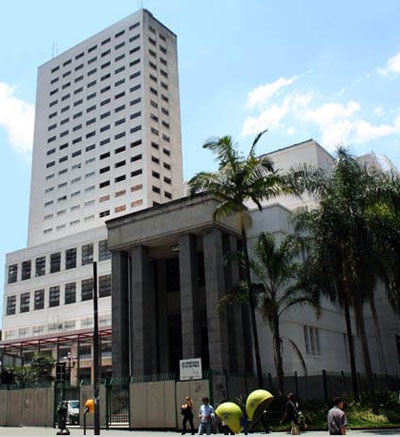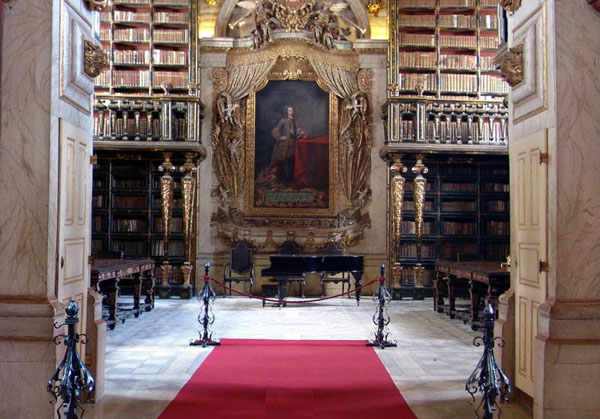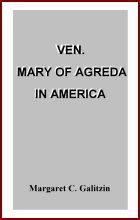Ambiences and Tendencies
 |
 |
 |
 |
 |
 |
 |
Just a Deposit for Books? Or also a
Symbol of the Dignity of Spirit?
There are two ways of conceiving a library. In the first way, one attends only to its material aspect. Books, magazines, documents, bookcases, filing cabinets and tables should be safely conserved from moisture, fire, moths, thieves, etc. At the same time, the documents, magazines and books must be well ordered so they can be easily found.
 The building for the library, designed "functionally," should therefore correspond to this objective and not go beyond this practical purpose.
The building for the library, designed "functionally," should therefore correspond to this objective and not go beyond this practical purpose.
To illustrate this conception of a building, for example, is a structure with four successively higher boxes, suggesting the idea of a huge dresser with simple lines composed of four pieces of different sizes, designed to store various different objects each in its place and without confusion. And, as in furniture of this type, drawers are placed everywhere: They are the windows on the building. The great disproportion between the parts of the "dresser" is the tribute paid to the extravagance of the century.
Thus described summarily is the Municipal Library of São Paulo, reproduced in the first photo of this page..
Let us admit, for the sake of argument, that this form fulfils its function for everything relating to books, magazines, documents and binders. But what about man? And even more, what about the reader?
*
In the second photo we find another way to see the ideal edifice for a library. Providing all that is necessary for practical purposes, it nonetheless rises to a higher plane. The building should express the fundamentally noble aspect of the work of reading and studing. It should reflect the hierarchy of values that places, in a certain sense, thinking at the apex of human activities, surpassed only by praying. For this reason, the building should have, as much as possible, a regal magnificence.
 It is this conception that corresponds to the Library of Coimbra, built in the first half of the 18th century.
It is this conception that corresponds to the Library of Coimbra, built in the first half of the 18th century.
The books, splendidly bound, are arranged on immense, solid shelves, all numbered so they can be easily classified and found. With the resources of the time, it fulfilled the height of the "functional." On the other hand, the sumptuousness of the decor has something of a palace and something of a church. In the center, the picture of the King of Portugal, Dom João V, pays tribute to this monarch under whom that building was made, and highlights how much consideration he had for the scholars who constituted the highest rung of the social and political hierarchy.
The building not only serves a material purpose, i.e., to store paper, parchment, shelves, etc., but also a real spiritual objective: to emphasize to all who see it the prestige of the intellectual in the natural order of things and, consequently, in the hierarchy of values of temporal society.
*
Perhaps someone will object that the São Paulo Municipal Library has a monumental grandeur that in some way constitutes a tribute to the intrinsic nobility of the intellectual life.
The objection is unfounded. Nobility is not a strictly functional value and cannot, therefore, express itself fully and adequately just in terms of functionality or size.
Mere functionality alone is fitting perhaps for buildings of an industrial character, where fabricating a product takes precedence in the whole architectural design. But not, however, for buildings designed to serve purposes that, while having something of the practical, transcend the mere sphere of practicality. Nobility does not properly express itself by quantity, but rather by quality.

Catolicismo n. 119, November 1960
Posted October 8, 2014

To illustrate this conception of a building, for example, is a structure with four successively higher boxes, suggesting the idea of a huge dresser with simple lines composed of four pieces of different sizes, designed to store various different objects each in its place and without confusion. And, as in furniture of this type, drawers are placed everywhere: They are the windows on the building. The great disproportion between the parts of the "dresser" is the tribute paid to the extravagance of the century.
Thus described summarily is the Municipal Library of São Paulo, reproduced in the first photo of this page..
Let us admit, for the sake of argument, that this form fulfils its function for everything relating to books, magazines, documents and binders. But what about man? And even more, what about the reader?
In the second photo we find another way to see the ideal edifice for a library. Providing all that is necessary for practical purposes, it nonetheless rises to a higher plane. The building should express the fundamentally noble aspect of the work of reading and studing. It should reflect the hierarchy of values that places, in a certain sense, thinking at the apex of human activities, surpassed only by praying. For this reason, the building should have, as much as possible, a regal magnificence.

The books, splendidly bound, are arranged on immense, solid shelves, all numbered so they can be easily classified and found. With the resources of the time, it fulfilled the height of the "functional." On the other hand, the sumptuousness of the decor has something of a palace and something of a church. In the center, the picture of the King of Portugal, Dom João V, pays tribute to this monarch under whom that building was made, and highlights how much consideration he had for the scholars who constituted the highest rung of the social and political hierarchy.
The building not only serves a material purpose, i.e., to store paper, parchment, shelves, etc., but also a real spiritual objective: to emphasize to all who see it the prestige of the intellectual in the natural order of things and, consequently, in the hierarchy of values of temporal society.
Perhaps someone will object that the São Paulo Municipal Library has a monumental grandeur that in some way constitutes a tribute to the intrinsic nobility of the intellectual life.
The objection is unfounded. Nobility is not a strictly functional value and cannot, therefore, express itself fully and adequately just in terms of functionality or size.
Mere functionality alone is fitting perhaps for buildings of an industrial character, where fabricating a product takes precedence in the whole architectural design. But not, however, for buildings designed to serve purposes that, while having something of the practical, transcend the mere sphere of practicality. Nobility does not properly express itself by quantity, but rather by quality.

Catolicismo n. 119, November 1960
Posted October 8, 2014
______________________
______________________








